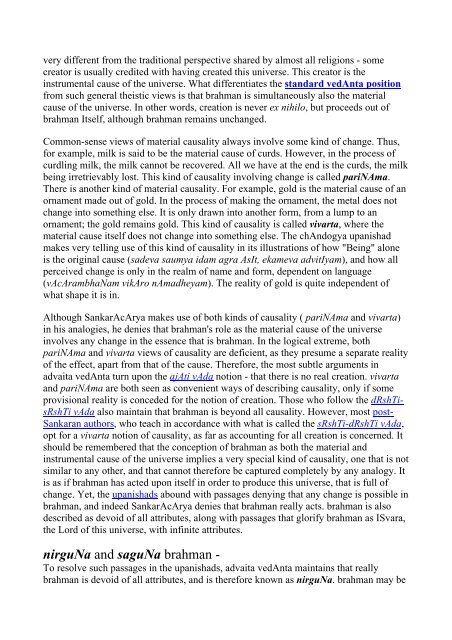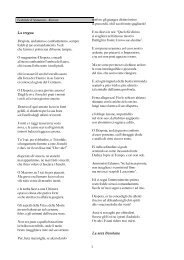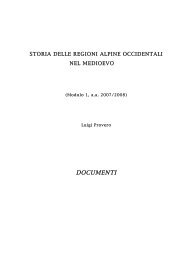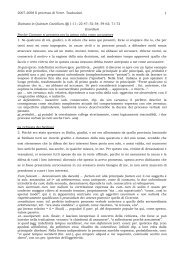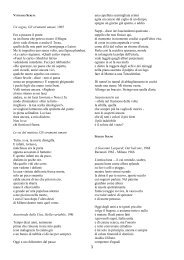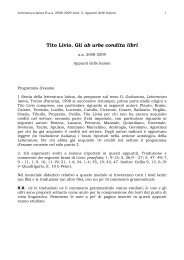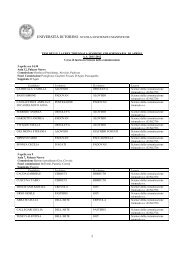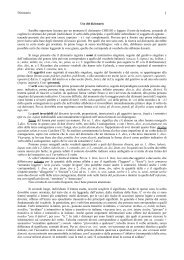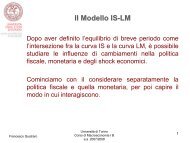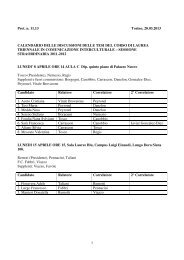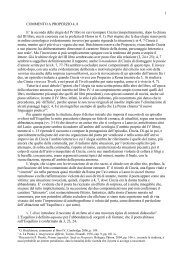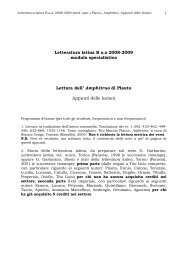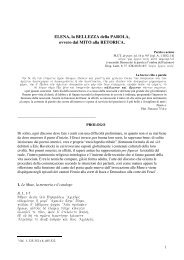ajAti vAda
ajAti vAda
ajAti vAda
Create successful ePaper yourself
Turn your PDF publications into a flip-book with our unique Google optimized e-Paper software.
very different from the traditional perspective shared by almost all religions - some<br />
creator is usually credited with having created this universe. This creator is the<br />
instrumental cause of the universe. What differentiates the standard vedAnta position<br />
from such general theistic views is that brahman is simultaneously also the material<br />
cause of the universe. In other words, creation is never ex nihilo, but proceeds out of<br />
brahman Itself, although brahman remains unchanged.<br />
Common-sense views of material causality always involve some kind of change. Thus,<br />
for example, milk is said to be the material cause of curds. However, in the process of<br />
curdling milk, the milk cannot be recovered. All we have at the end is the curds, the milk<br />
being irretrievably lost. This kind of causality involving change is called pariNAma.<br />
There is another kind of material causality. For example, gold is the material cause of an<br />
ornament made out of gold. In the process of making the ornament, the metal does not<br />
change into something else. It is only drawn into another form, from a lump to an<br />
ornament; the gold remains gold. This kind of causality is called vivarta, where the<br />
material cause itself does not change into something else. The chAndogya upanishad<br />
makes very telling use of this kind of causality in its illustrations of how "Being" alone<br />
is the original cause (sadeva saumya idam agra AsIt, ekameva advitIyam), and how all<br />
perceived change is only in the realm of name and form, dependent on language<br />
(vAcArambhaNam vikAro nAmadheyam). The reality of gold is quite independent of<br />
what shape it is in.<br />
Although SankarAcArya makes use of both kinds of causality ( pariNAma and vivarta)<br />
in his analogies, he denies that brahman's role as the material cause of the universe<br />
involves any change in the essence that is brahman. In the logical extreme, both<br />
pariNAma and vivarta views of causality are deficient, as they presume a separate reality<br />
of the effect, apart from that of the cause. Therefore, the most subtle arguments in<br />
advaita vedAnta turn upon the <strong>ajAti</strong> <strong>vAda</strong> notion - that there is no real creation. vivarta<br />
and pariNAma are both seen as convenient ways of describing causality, only if some<br />
provisional reality is conceded for the notion of creation. Those who follow the dRshTisRshTi<br />
<strong>vAda</strong> also maintain that brahman is beyond all causality. However, most post-<br />
Sankaran authors, who teach in accordance with what is called the sRshTi-dRshTi <strong>vAda</strong>,<br />
opt for a vivarta notion of causality, as far as accounting for all creation is concerned. It<br />
should be remembered that the conception of brahman as both the material and<br />
instrumental cause of the universe implies a very special kind of causality, one that is not<br />
similar to any other, and that cannot therefore be captured completely by any analogy. It<br />
is as if brahman has acted upon itself in order to produce this universe, that is full of<br />
change. Yet, the upanishads abound with passages denying that any change is possible in<br />
brahman, and indeed SankarAcArya denies that brahman really acts. brahman is also<br />
described as devoid of all attributes, along with passages that glorify brahman as ISvara,<br />
the Lord of this universe, with infinite attributes.<br />
nirguNa and saguNa brahman -<br />
To resolve such passages in the upanishads, advaita vedAnta maintains that really<br />
brahman is devoid of all attributes, and is therefore known as nirguNa. brahman may be


